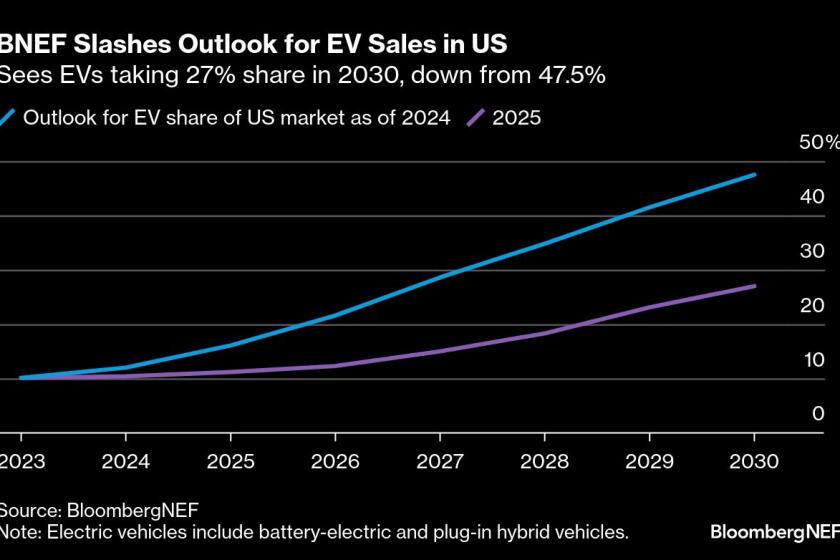Ford Posts 58% Decline in Net Profit
- Share via
DEARBORN, Mich. — Ford Motor Co.’s costs of launching redesigned vehicles combined with weak U.S. sales for a 58% drop in first-quarter profit, the No. 2 domestic auto maker reported Wednesday.
“Overall, it was a horrible quarter,” said industry analyst David Healy of Burnham Securities Inc.
Ford executives insisted the worst was over and that the outlook for the rest of 1996 is good. Healy and other analysts agreed.
The company earned $653 million, or 54 cents a share, in the first three months of the year. That compared with Ford’s unusually strong showing of $1.55 billion, or $1.44 a share, in the first quarter of 1995.
Still, the latest results were better than Wall Street’s expectation of 33 cents a share. As a result, Ford stock rose $1.25 to $36.625 a share on the New York Stock Exchange.
The news came one day after No. 3 Chrysler Corp. reported healthy first-quarter earnings of $1 billion, more than double its performance from the year-ago period. General Motors Corp. releases its earnings Monday.
Ford’s automotive operations showed a profit of $142 million for the quarter, down 87% from $1.1 billion a year ago. Its U.S. automotive profit was just $48 million, down 94% from $825 million a year ago.
“Automotive operations shouldn’t be near break-even for an automotive company like that, particularly when industry sales are pretty strong,” Healy said.
Revenue was up 4% at $36.3 billion from $34.8 billion in the year-ago period, largely because of a strong showing by Ford’s Financial Services Group. It set a first-quarter earnings record of $511 million, up 25% from a year ago.
Ford played down the year-to-year comparisons.
“We’re a victim of our great first quarter last year,” said David McCammon, Ford vice president of finance. “It really looks worse on a year-to-year comparison than it really is.”
Ford did not indicate its new product launch costs, but it did say they were considerable because they involved redesigns of two high-volume models: the F-series pickup in North America and the Fiesta in Brazil and Europe.
But analysts complain that Ford’s development costs remain substantially higher than those of its competitors.
“The results are still quite disappointing both in the United States and overseas,” said Mary Anne Sudol of Fitch Investors Service Inc. “Ford needs to overcome its cost structure.”
John McElroy, editorial director of the trade magazine Automotive Industries, said Chrysler and GM have reduced expenses by “target-costing” the design of new vehicles.
“What that means is the company establishes an investment it is willing to make in a new program,” he said. “It tries to invest as little as possible, then it designs every system in that car--right down to the last nut, bolt and washer--to meet that investment target.”
Ford has been undergoing an extensive global reorganization and cost-cutting program it calls “Ford 2000.” Executives predicted that effort and its new lineup of redesigned models will begin to pay off soon.
Healy said his analysis is that Ford’s prospects should improve in the rest of 1996.



